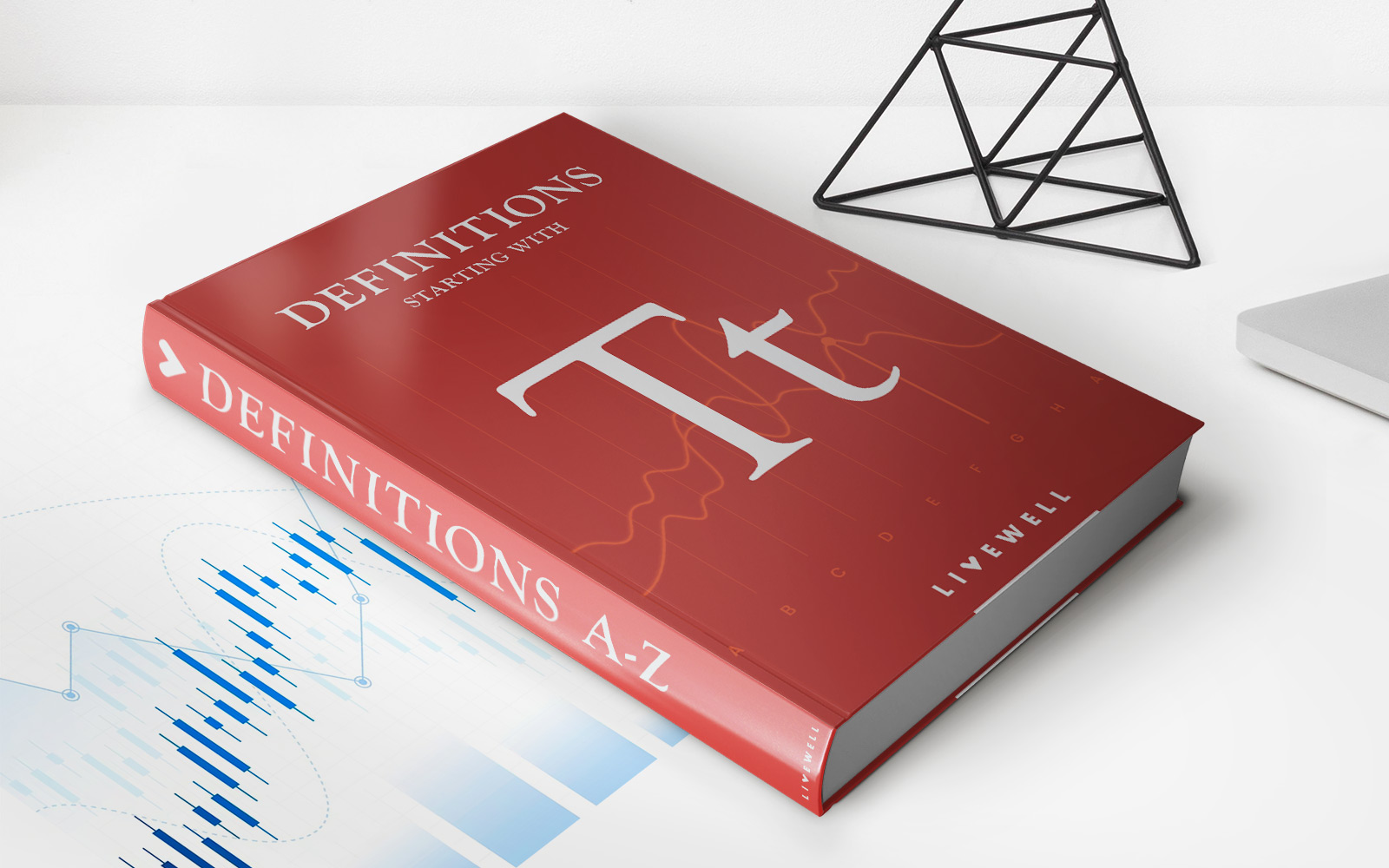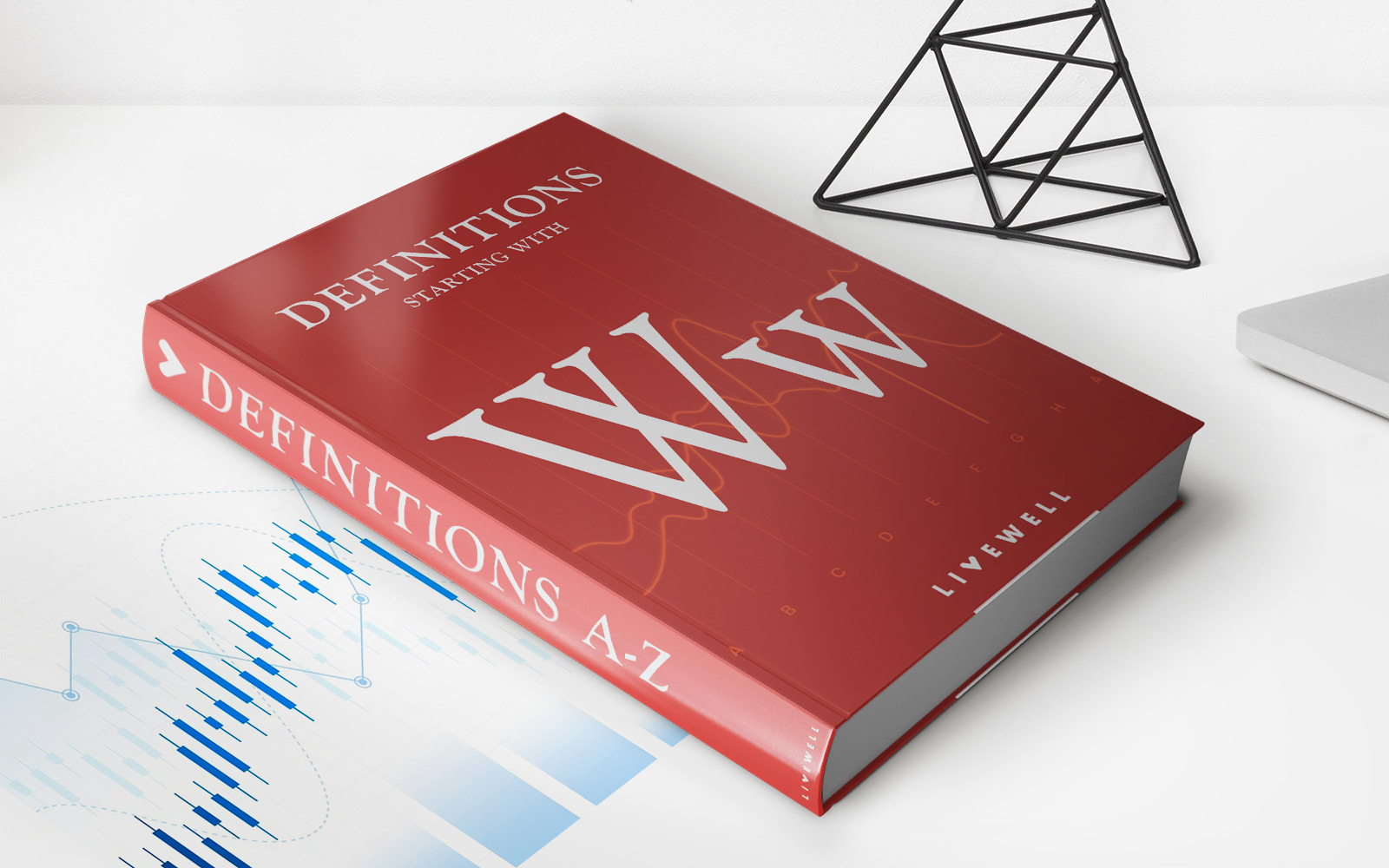

Finance
How To Transfer A Pension
Published: November 27, 2023
Learn how to transfer your pension with expert tips and advice in the field of finance. Maximize your financial future today!
(Many of the links in this article redirect to a specific reviewed product. Your purchase of these products through affiliate links helps to generate commission for LiveWell, at no extra cost. Learn more)
Table of Contents
Introduction
Welcome to our comprehensive guide on how to transfer a pension. In today’s fast-paced and ever-changing financial landscape, many individuals find themselves in a position where they need to consider transferring their pension. Whether it’s to take advantage of better investment options, reduce fees, or consolidate multiple pensions into one, understanding the pension transfer process is crucial.
In this article, we will take you through the step-by-step process of transferring your pension. We will delve into the key factors to consider when assessing your current pension, researching potential pension providers, comparing transfer values and fees, reviewing investment options, finalizing the transfer process, and monitoring your transferred pension.
Transferring a pension can be a complex endeavor, and it’s essential to have a solid understanding of the potential benefits, risks, and implications before making any decisions. Whether you’re approaching retirement or simply looking to optimize your pension strategy, this guide will provide you with the knowledge and insights you need to navigate the pension transfer process confidently.
We understand that the financial world can be overwhelming, especially when it comes to retirement planning. That’s why we aim to simplify the process and empower you with the information you need to make informed decisions. So, without further ado, let’s dive into the world of pension transfers and explore the steps to successfully transfer your pension.
Understanding Pension Transfers
Before diving into the specifics of pension transfers, it’s important to have a clear understanding of what a pension transfer entails. A pension transfer refers to the process of moving your retirement savings from one pension scheme to another. This can be within the same provider or to a different provider altogether.
There are various reasons why individuals consider transferring their pensions. One common motivation is to consolidate multiple pensions into a single scheme. This simplifies the management of pension funds, reduces administrative hassle, and provides a clearer overview of retirement savings.
Another reason for transferring a pension is to take advantage of better investment options. A pension transfer can offer access to a wider range of investment opportunities, such as different asset classes or investment funds. This flexibility allows individuals to align their pension strategy with their risk tolerance and financial goals.
In addition, transferring a pension can help reduce fees. Some pension schemes may have higher charges or hidden costs that eat into your retirement savings over time. By transferring to a scheme with lower fees or more transparent charging structures, you can potentially save money in the long run.
Before considering a pension transfer, it’s important to assess the current pension scheme and understand any benefits or protections it may offer. It’s worth noting that not all pensions are transferable, especially those that come with guarantees or defined benefits. In such cases, transferring may result in the loss of valuable benefits, and it’s crucial to weigh the pros and cons before making a decision.
Furthermore, it’s important to be aware of any potential penalties or charges associated with transferring a pension. Some pension providers impose exit fees or transfer fees, which can eat into your retirement savings. Understanding these costs is essential in determining whether a pension transfer is financially viable.
In the next section, we will delve into the process of assessing your current pension to ensure you have a solid foundation for making an informed decision about transferring your pension.
Assessing Your Current Pension
Before proceeding with a pension transfer, it’s crucial to assess your current pension to understand its features, performance, and potential benefits. This involves reviewing the terms and conditions of the pension scheme, evaluating the investment performance, and assessing any additional benefits or protections that may be associated with it.
Start by gathering all the necessary information about your current pension. This includes the pension provider’s name, the type of pension scheme (e.g., defined contribution or defined benefit), the current fund value, and any additional benefits you may have, such as a guaranteed minimum pension or spouse’s pension.
Next, review the terms and conditions of your pension scheme. Look for important details, such as the retirement age, potential penalties for early withdrawal, and any restrictions on accessing your pension funds. Understanding these terms will help you determine if transferring your pension aligns with your retirement goals and timeline.
Assess the investment performance of your current pension. Review the historical returns and compare them to industry benchmarks or similar investment options. This will give you an idea of how your pension investments have performed and whether there is room for improvement with a different pension provider.
Consider any additional benefits or protections that may come with your current pension. For instance, some pension schemes offer guaranteed annuity rates, which provide a higher income in retirement. Evaluate whether transferring your pension would result in the loss of these valuable benefits and weigh them against the potential advantages of a transfer.
It’s also important to evaluate the administration and customer service of your current pension provider. Assess their responsiveness, the clarity of their communication, and the ease of managing your pension online. Poor customer service can be a significant disadvantage, especially when it comes to addressing issues or making changes to your pension account.
By assessing your current pension thoroughly, you will have a clearer understanding of its strengths, weaknesses, and unique features. This knowledge will enable you to make informed decisions about whether a pension transfer is the right choice for you.
In the next section, we will explore the process of researching potential pension providers to find the most suitable option for your needs.
Researching Potential Pension Providers
When considering a pension transfer, it’s crucial to carefully research potential pension providers to find the most suitable option for your needs. The right pension provider can offer a range of investment options, competitive fees, excellent customer service, and the flexibility to meet your retirement goals. Here are some key steps to help you in your research:
1. Identify your retirement goals and investment preferences: Before researching pension providers, define your retirement goals and how you want to invest your pension funds. Determine your risk tolerance, desired investment strategy, and any specific requirements or preferences you may have.
2. Look for reputable and credible providers: Start your research by looking for reputable pension providers with a strong track record. Seek out companies that are well-established, regulated by financial authorities, and have a positive reputation in the industry.
3. Evaluate investment options: Assess the range of investment options offered by potential pension providers. Look for a diverse selection of funds and asset classes that align with your investment preferences. The ability to customize your investment portfolio to suit your risk appetite and financial goals is crucial.
4. Consider fees and charges: Compare the fees and charges associated with each potential pension provider. Ensure you have a clear understanding of the management fees, transaction costs, and any other charges that may apply. Choosing a provider with competitive fees can significantly impact your long-term returns.
5. Assess customer service and support: Investigate the level of customer service and support provided by the pension providers you are considering. Read reviews and testimonials to gauge the experiences of current and past customers. A provider that offers responsive customer support and easy access to account information can greatly enhance your pension management experience.
6. Check the financial stability of the provider: Consider the financial stability and strength of potential pension providers. Look for providers with solid financial ratings and a strong financial standing. Ensuring the provider is financially robust provides peace of mind that your retirement funds will be secure.
7. Seek professional advice if needed: If you are unsure about the pension transfer process or need guidance in selecting a provider, consider seeking professional advice from a financial advisor. An experienced advisor can provide personalized recommendations based on your specific circumstances and goals.
By conducting thorough research and considering these factors, you can identify potential pension providers that align with your retirement goals and investment preferences. In the next section, we will explore how to compare transfer values and fees to make an informed decision.
Comparing Transfer Values and Fees
When transferring a pension, one crucial aspect to consider is the transfer value and associated fees. Comparing transfer values and fees allows you to assess the financial impact of the transfer and determine if it aligns with your retirement goals. Here are some key steps to help you compare transfer values and fees:
1. Obtain transfer value quotes: Request transfer value quotes from the pension providers you are considering. These quotes will provide an estimate of the amount you will receive if you transfer your pension to the new provider. Ensure you have the latest and accurate figures to make an informed decision.
2. Consider any penalties or charges: Take into account any penalties or charges that may apply when transferring your pension. Some providers impose exit fees, investment adjustment costs, or transfer fees, which can eat into your transfer value. Be aware of these charges and assess their impact on the overall value of your transfer.
3. Compare transfer values: Compare the transfer values provided by different pension providers. Look beyond the initial figures and consider the growth potential of the pension funds offered by each provider. Higher transfer values may initially seem enticing, but it’s crucial to evaluate the long-term growth prospects and investment performance as well.
4. Evaluate ongoing fees: Assess the ongoing fees and charges associated with the new pension provider. Consider management fees, administration costs, and any other charges that may apply. Ensure you have a clear understanding of these fees and how they may impact your pension over time.
5. Understand investment options: Compare the investment options offered by each potential pension provider. Evaluate the range of funds, asset classes, and investment strategies available. Look for providers that offer diverse and flexible investment options that align with your risk tolerance and financial goals.
6. Consider additional features and benefits: Take into account any additional features and benefits offered by the pension providers. Some providers may offer bonuses, loyalty rewards, or special perks that can enhance the value and attractiveness of the pension transfer. Consider these factors when weighing your options.
Remember, it’s not purely about the transfer value and fees alone. It’s essential to consider the overall value proposition, including investment options, customer service, and the reputation of the provider. By evaluating these factors comprehensively, you can make an informed decision that aligns with your long-term retirement goals.
Once you have compared transfer values and fees, the next step is to review the investment options available with each pension provider. In the next section, we will explore how to make an informed decision by reviewing investment options.
Reviewing Investment Options
When considering a pension transfer, reviewing the investment options available with each potential pension provider is crucial. The investment options offered can have a significant impact on the growth and performance of your pension funds. Here are key steps to help you review investment options:
1. Assess the range of investment funds: Examine the variety of investment funds available with each pension provider. Look for a diverse selection of funds that span different asset classes, such as equities, bonds, and real estate. A wide range of investment options provides opportunities for diversification and risk management.
2. Evaluate the performance history: Review the historical performance of the investment funds offered by each provider. Look for consistent and favorable returns over the long term. Consider the fund’s performance against relevant benchmarks and indices to gauge its competitiveness.
3. Consider risk and volatility: Assess the risk levels associated with each investment option. Different funds may have varying levels of risk and volatility. Evaluate your risk tolerance and choose investment options that align with your comfort level. It’s important to strike a balance between risk and potential returns.
4. Look for flexibility in investment strategy: Consider the flexibility offered in terms of investment strategy. Some pension providers may allow you to choose between passive or active investment strategies. Passive strategies track specific indices, whereas active strategies involve active management by fund managers. Evaluate which approach best aligns with your investment preferences.
5. Explore retirement planning tools: Investigate if the pension providers offer retirement planning tools or calculators. These tools can help you assess your estimated retirement income based on different investment scenarios. Utilizing such tools can provide valuable insights into your projected financial situation in retirement.
6. Seek professional guidance if needed: If you’re unsure about which investment options to choose or need expert advice, consider consulting a financial advisor. An advisor can assess your financial goals, risk tolerance, and time horizon to provide personalized recommendations on the most suitable investment options for your pension funds.
By thoroughly reviewing the investment options available, you can assess the potential for growth, diversification, and alignment with your retirement goals. Remember, past performance is not indicative of future results, and it’s important to regularly review and adjust your investment portfolio as necessary.
Once you have reviewed the investment options, the next step is to finalize the transfer process. In the next section, we will explore the key considerations and steps involved in finalizing the pension transfer.
Finalizing the Transfer Process
After thoroughly assessing your current pension, researching potential providers, comparing transfer values and fees, and reviewing investment options, you are now ready to finalize the pension transfer process. Here are the key considerations and steps to help you navigate this stage:
1. Confirm the details with your chosen pension provider: Contact the selected pension provider and confirm the transfer details, including the transfer value, fees, and investment options. Ensure you have a clear understanding of the process, documentation required, and any specific deadlines or timeframes.
2. Complete the necessary paperwork: Most pension providers will require you to complete transfer forms and provide supporting documents, such as identification and proof of address. Fill out the paperwork accurately and double-check for any errors or omissions. Submit the completed forms and documents to initiate the transfer process.
3. Coordinate with your current pension provider: Inform your current pension provider of your intention to transfer your pension. They will provide you with the necessary paperwork to start the transfer process. Coordinate with them to ensure a smooth transition without any delays or complications.
4. Track the progress of the transfer: Stay informed about the progress of your pension transfer. Maintain regular communication with both the current and new pension providers to track the transfer process and address any concerns or issues that may arise. Be patient, as the transfer may take some time to complete, depending on the providers’ procedures.
5. Seek professional advice if needed: If you are unsure about any aspect of the transfer process or require assistance, consider seeking advice from a financial advisor or pension specialist. They can provide guidance and help you navigate any complexities that may arise during the transfer.
6. Keep copies of all documents: Maintain copies of all the paperwork and documentation related to the pension transfer. This includes transfer forms, confirmation letters, and any other relevant correspondence. These documents serve as important records and can be helpful for future reference or in case of any disputes.
7. Review the post-transfer documentation: Once the transfer is complete, carefully review the documents provided by the new pension provider. Ensure that all the details, such as investment options, fees, and personal information, are accurate. Contact the new provider if you spot any discrepancies or have questions regarding the post-transfer arrangements.
By following these steps and staying vigilant throughout the transfer process, you can finalize the pension transfer smoothly and efficiently. Once the transfer is complete, it’s important to monitor and review your transferred pension regularly, which we will discuss in the next section.
Monitoring Your Transferred Pension
After successfully transferring your pension, it’s crucial to monitor and review your transferred pension regularly. Monitoring your pension ensures that it continues to align with your retirement goals and that you stay informed about its performance and any changes in the investment landscape. Here are key steps to help you effectively monitor your transferred pension:
1. Review your pension statements: Regularly review the pension statements provided by your new pension provider. These statements will outline the current value of your pension funds, any contributions or withdrawals made, and any fees or charges incurred. Pay close attention to potential changes in investment performance and keep track of the growth of your pension savings.
2. Stay informed about investment performance: Keep yourself informed about the performance of your pension investments. Monitor the performance of the investment funds you have chosen and compare them to relevant benchmarks. While short-term fluctuations are normal, evaluate long-term trends to ensure your investments are delivering the desired results.
3. Assess your risk tolerance: Regularly reassess your risk tolerance and ensure that your investment strategy aligns with your comfort level. As you approach retirement, you may need to adjust the level of risk in your portfolio to prioritize capital preservation. Consult with a financial advisor if you need guidance in this area.
4. Stay updated on pension regulations: Stay informed about any changes or updates in pension regulations and rules. Changes in legislation can impact your pension, such as alterations in tax allowances, retirement age, or contribution limits. Regularly review pension-related news and consult with experts to ensure you are aware of any necessary adjustments.
5. Revisit your retirement goals: Regularly revisit your retirement goals and assess whether they have changed. Life circumstances, financial situations, and personal objectives can evolve over time. Align your pension strategy with your revised retirement goals and make any necessary adjustments to ensure that your pension continues to work for you.
6. Seek professional advice when needed: If you have any questions or concerns about monitoring your pension, seek advice from a financial advisor or pension specialist. They can provide guidance, review your pension strategy, and help you make informed decisions based on your individual circumstances and goals.
7. Take advantage of pension planning tools: Utilize pension planning tools or calculators offered by your pension provider to gain insights into your projected retirement income. These tools can help you assess if you are on track to achieve your desired retirement lifestyle and identify any potential gaps or areas of improvement.
By actively monitoring your transferred pension, you can ensure that it remains on track to meet your retirement goals. Regular reviews and adjustments, if necessary, will help you make informed decisions and maximize the potential of your pension savings.
After reading this comprehensive guide on how to transfer a pension and successfully navigating the pension transfer process, you are now equipped with the knowledge and insights to make informed decisions about your retirement savings. Remember, it’s always advisable to seek professional advice tailored to your specific circumstances to ensure the best outcomes for your financial future.
Wishing you a secure and prosperous retirement!
Conclusion
Transferring a pension is a significant financial decision that can have a profound impact on your retirement savings. Throughout this comprehensive guide, we have explored the steps involved in transferring a pension, from understanding the process to assessing your current pension, researching potential providers, comparing transfer values and fees, reviewing investment options, finalizing the transfer process, and monitoring your transferred pension.
By taking the time to assess your current pension, research potential providers, and carefully analyze transfer values and fees, you can make informed decisions that align with your retirement goals. Evaluating investment options and monitoring your transferred pension will help you stay on track and ensure that your retirement savings are working for you.
It’s important to remember that every individual’s circumstances and financial goals are unique. It’s advisable to seek professional advice from a financial advisor or pension specialist who can provide personalized guidance tailored to your specific situation.
Transferring a pension can offer benefits such as consolidation, access to better investment options, and potential cost savings. However, it is equally important to consider any potential drawbacks, such as the loss of valuable benefits or potential fees. A thorough assessment and understanding of your current pension, as well as diligent research and ongoing monitoring, are key to making sound financial decisions.
We hope that this guide has provided you with the necessary insights and considerations to confidently navigate the pension transfer process. Remember, planning for retirement is a lifelong journey, and regular reviews, adjustments, and professional advice are valuable tools to ensure that your pension serves you well throughout your retirement years.
Make the most of your pension transfer and embark on a secure and fulfilling retirement!














